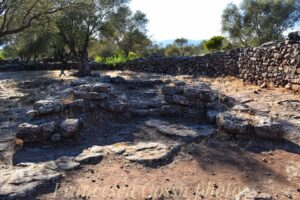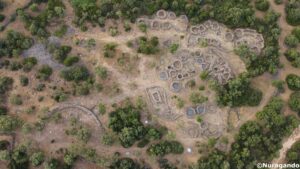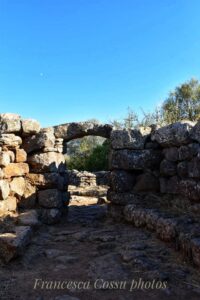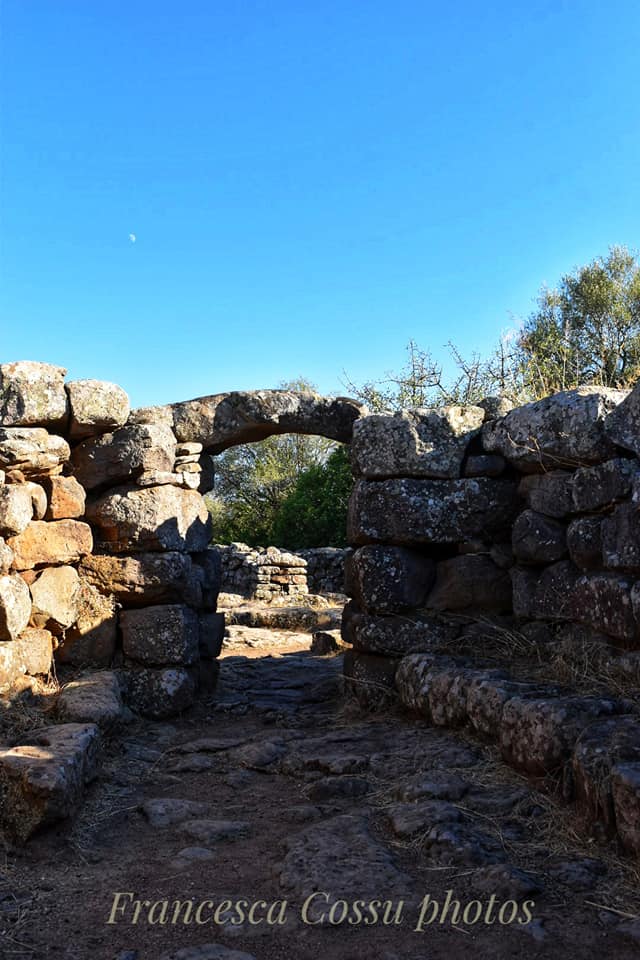The nuragic complex of Serra Orrios, in the territory of Dorgali, was practically unknown until the first half of the 1930s. The discovery of the nuragic complex must therefore be placed between 1933, the year of Taramelli’s retirement, and May 1936, the start of excavations by Doro Levi, a prominent figure both nationally and internationally for his research in Etruria and the Aegean. Among the numerous initiatives promoted during his brief stay on the Island, the excavations at Serra Orrios certainly constitute a significant episode; and at Serra Orrios, Doro Levi will dedicate three subsequent excavation campaigns, conducted in the field by Francesco Soldati, “assistant to the government excavations.” In that first campaign, about fifty huts were identified, the main temple in the Recinto Bed, and a giant’s tomb, located about a hundred meters west of enclosure A and already looted in ancient times. The work resumed in the spring of the following year and, “by force of oxen,” they managed to delineate –in total– the outline of over 70 huts. In the third campaign, spring of 1938, 15 already known huts were explored, and smoothers made of steatite were found, part of a casting mold, a few bronzes, and abundant ceramics. On June 25, 1938, the work was halted and all the material was sent to Cagliari. Unfortunately, that same year, in application of the racial laws, a rector’s note suspended the Trieste scholar from university teaching, and on December 1, he also ceased his duties at the Superintendency and left Italy to find refuge in the United States. After returning to Italy at the end of 1945, in the spring of 1947 Doro Levi returned to Dorgali. That trip allowed him to recover the bronze statuette of Calagonone –the so-called “cuoiaio”– but it would not help him complete the project of studying the architectures and materials of Serra Orrios.
The work resumed in the spring of the following year and, “by force of oxen,” they managed to delineate –in total– the outline of over 70 huts. In the third campaign, spring of 1938, 15 already known huts were explored, and smoothers made of steatite were found, part of a casting mold, a few bronzes, and abundant ceramics. On June 25, 1938, the work was halted and all the material was sent to Cagliari. Unfortunately, that same year, in application of the racial laws, a rector’s note suspended the Trieste scholar from university teaching, and on December 1, he also ceased his duties at the Superintendency and left Italy to find refuge in the United States. After returning to Italy at the end of 1945, in the spring of 1947 Doro Levi returned to Dorgali. That trip allowed him to recover the bronze statuette of Calagonone –the so-called “cuoiaio”– but it would not help him complete the project of studying the architectures and materials of Serra Orrios. Subsequently, the village will be remembered by Lilliu in a brief note from 1947 and illustrated, in 1954, by Christian Zervos with numerous and evocative photographic images.
Subsequently, the village will be remembered by Lilliu in a brief note from 1947 and illustrated, in 1954, by Christian Zervos with numerous and evocative photographic images.
In 1961, restoration work is carried out by the Superintendency of Antiquities of Sassari, but it will be necessary to wait until 1980 – on the occasion of the opening of the Civic Archaeological Museum of Dorgali – to have a moment of reflection on the cultural frameworks that emerged and the related issues, in the volume “Dorgali. Archaeological Documents.” Starting from 1986, work resumed for the arrangement of the archaeological area, which yielded materials that attest to the construction of the small temple A “in the final phases of the Middle Bronze Age,” while surveys conducted in rooms 22 and 22b – where the base levels had not been reached – “revealed an archaeological deposit with a stratigraphic sequence ranging from the Middle Bronze Age to the early Iron Age.” A “third rectangular temple was identified with an upper apse wall and a vestibule bordered by orthostatic slabs.”
Starting from 1986, work resumed for the arrangement of the archaeological area, which yielded materials that attest to the construction of the small temple A “in the final phases of the Middle Bronze Age,” while surveys conducted in rooms 22 and 22b – where the base levels had not been reached – “revealed an archaeological deposit with a stratigraphic sequence ranging from the Middle Bronze Age to the early Iron Age.” A “third rectangular temple was identified with an upper apse wall and a vestibule bordered by orthostatic slabs.”
Excerpt by Alberto Moravetti, taken from “I Tesori dell’Archeologia” (Library of the New Sardinia – 2011 – Delfino Editore)
The photos of the village of Serra Orrios in Dorgali are by Nuragando and Francesca Cossu.

